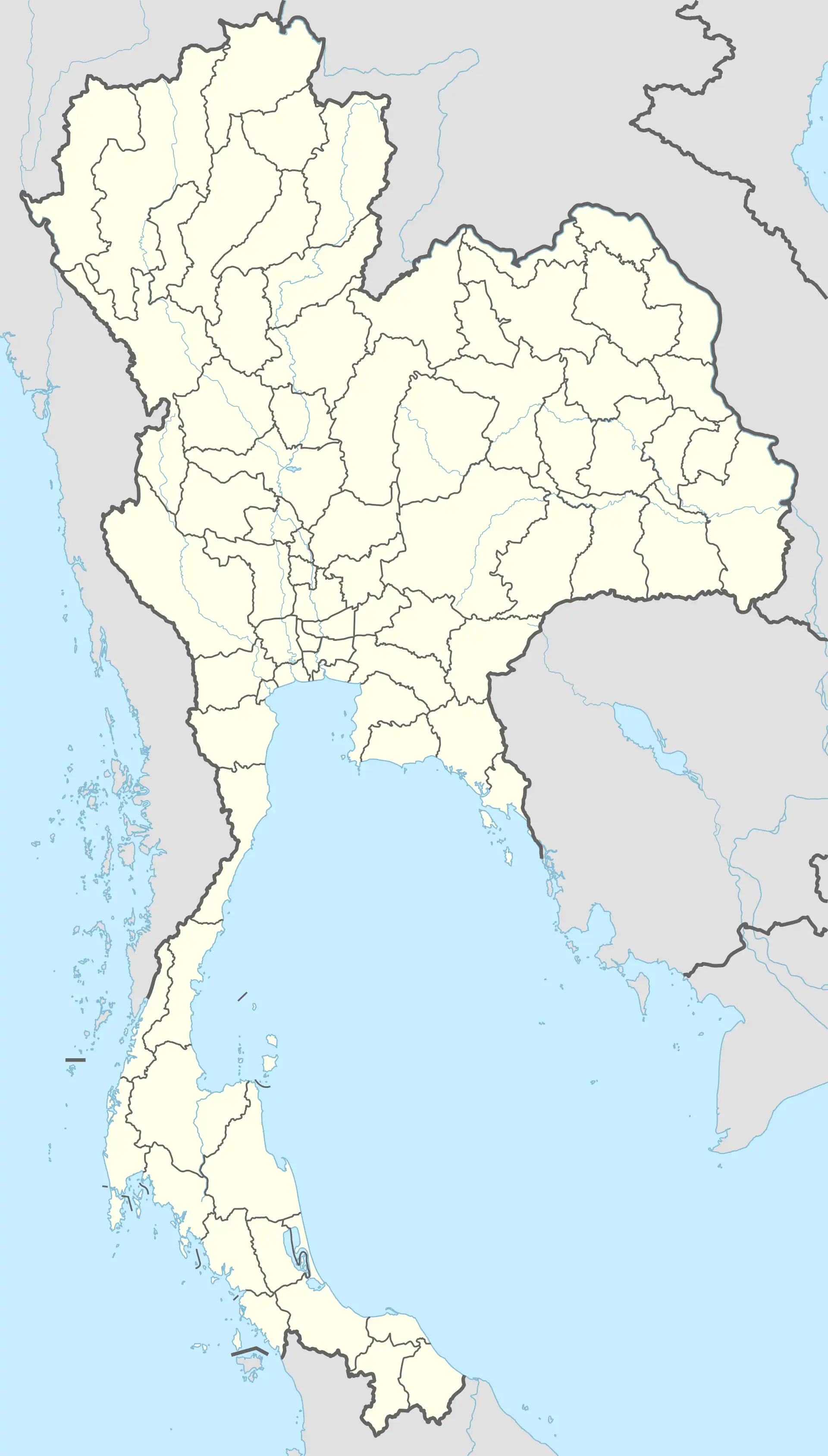Ko Libong
เกาะลิบง | |
|---|---|
.jpg.webp) Shallow sea, Ko Libong | |
 Ko Libong | |
| Coordinates: 7°35′0″N 99°03′0″E / 7.58333°N 99.05000°E | |
| Country | Thailand |
| Province | Trang Province |
| District | Kantang District |
| Area | |
| • Total | 35 km2 (14 sq mi) |
| Population (2012) | |
| • Total | 3,500 |
| Time zone | UTC+7 (ICT) |
Ko Libong (เกาะลิบง) is one of 550 islands in the Andaman Sea.[1] Lying off the coast of Thailand, it is a sub-district of Kantang District, Trang Procince, which includes Mu Ko Libong Archipelago and a small section of the shoreline near Kantang.
Geography
Ko Libong, Trang's largest island, is 30 minutes by long-tail boat from Hat Yao Ban Chao Mai Pier.[2] Less visited than neighbouring isles, Ko Libong is known for its flora and fauna as much as for its beaches. The island is home to a small Muslim fishing community and has a few resorts on its west coast beaches.[3]
On the east coast of Ko Libong at Laem Ju Hoi is a large area of mangroves protected by the Botanical Department as the Libong Archipelago Wildlife Reserve.[4]
Ko Libong's sea channels have sea grass, a favorite food of the rare dugong, making the Libong Wildlife Sanctuary one of the last habitats of the species.[5] Around 180 of the creatures survive there.[1]
Population
The majority of the population is Muslim. They still have a tradition of burning coconut shells before the end of fasting in Ramadan. An ancient tradition, Ban Mod Tanoy, a small muban on Ko Libong is only place in Thailand where the tradition continues.[6]
Environment
Two hundred dugongs are believed to still exist in Thai waters as of 2019, 180 of them off Ko Libong. Dugongs are listed in Thailand's Wild Animal Reservation and Protection Act as one of 19 protected wild species in Thailand. Their presence is due to the more than 12,000 rai of seagrass meadows surrounding Libong. Seagrass is the dugong's favourite food and 11 of the 13 species of seagrasses in Thailand are found at Ko Libong. The leading causes of dugong deaths are fishing equipment and boat collisions. In the first nine months of 2019, 21 dugongs have died. Among them was an infant dugong that died from eating plastic waste, which led to severe gastritis and blood infection. The dugong losses are exacerbated by their low birth rate; they cannot be bred in captivity. Ko Libong inhabitants have united to create a preservation zone for dugongs where fishing and navigation are limited. Residents monitor compliance from a watchtower on the island. They also scour the seagrass meadows for plastic debris. Ko Libong's program will later be expanded to 11 other dugong habitats, including Ko Phra Thong, areas in the Prasae River delta, and Bandon Bay. Ko Libong was named an ASEAN Heritage Park at the 15th ASEAN Ministerial Meeting on the Environment in October 2019.[1][7][8]
Economy
Bird nest collecting has been a money-making activity for Ko Libong residents for hundreds of years.[9] Ko Libong no longer has bird's nests, but collectors seek them on other islands in the Trang Sea, on Ko Muk, Ko Petra, and Ko Laolieng or in neighbouring provinces like Phatthalung, Krabi, and Phang Nga. Bird's nests are harvested three times a year, in February, April, and July-August. Each job takes about seven to eight days. When harvesting nests for the third time, harvesters wait until the chicks have flown away.[9]
Mu Ko Libong islands
| Nr | Island | Capital | Other Settlements | Area (km2) | Population[lower-alpha 1] |
|---|---|---|---|---|---|
| 1 | Ko Kradan | Ko Kradan | Ao Yangalong, Ao Paradise Lost, Ao Niang, Ao Phai, Ao Rongthao, Ao Chonglom, | 2.44 | 400 |
| 2 | Ko Libong | Maphrao | Klong Wa, Batubute, Lungkhao | 35.00 | 3500[lower-alpha 2] |
| 3 | Ko Muk | Ko Muk | Ao Klang, Ao Sapanyao, Ao Hua Laem, Ao Phangka, Ao Hua Non, Ao Farang, | 8.14 | 2000 |
| 4 | Other islands | Ko Nok | 0.5 | 0 | |
| Mu Ko Libong | Maphrao | Klong Wa, Batubute, Lungkhao, Ko Muk | 46.00 | 5900 |
See also
Notes
References
- 1 2 3 Mala, Dumrongkiat (14 October 2019). "Gentle giants' prime pasture". Bangkok Post. Retrieved 14 October 2019.
- ↑ "KOH LIBONG ISLANDS". Tourism Authority of Thailand (TAT). Retrieved 27 August 2017.
- ↑ DK Eyewitness travel guide: Thailand's Beaches and Islands. DK. 2010. ISBN 978-1-4053-5205-5. Retrieved June 7, 2020.
- ↑ "Libong Archipelago Wildlife Reserve". Lonely Planet. Retrieved June 7, 2020.
- ↑ Luekens, David (September 10, 2019), 10 alternative Thai islands for those who hate crowds, CNN, retrieved January 19, 2020
- ↑ "เผากะลาก่อนละศีลอดในเดือนรอมฎอน หนึ่งเดียวใน จ.ตรัง" (Video). Channel 8 (in Thai). 2017-06-21.
- ↑ "15th ASEAN Ministerial Meeting on the Environment and the 15th Meeting of the Conference of the Parties to the ASEAN Agreement on Transboundary Haze Pollution". Association of Southeast Asian Nations (ASEAN). ASEAN Secretariat News. 9 October 2019. Retrieved 14 October 2019.
- ↑ Wipatayotin, Apinya (11 October 2019). "Marine parks get Asean heritage nod". Bangkok Post. Retrieved 14 October 2019.
- 1 2 Panyaarvudh, Jintana (20 August 2018). "Scaling high for generations". The Nation. Retrieved 20 August 2018.
- ↑ Thailand's Deep South, Rough Guides, retrieved January 19, 2020
External links
 Ko Muk travel guide from Wikivoyage
Ko Muk travel guide from Wikivoyage